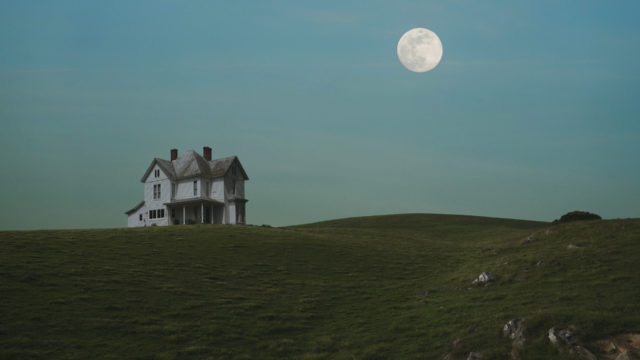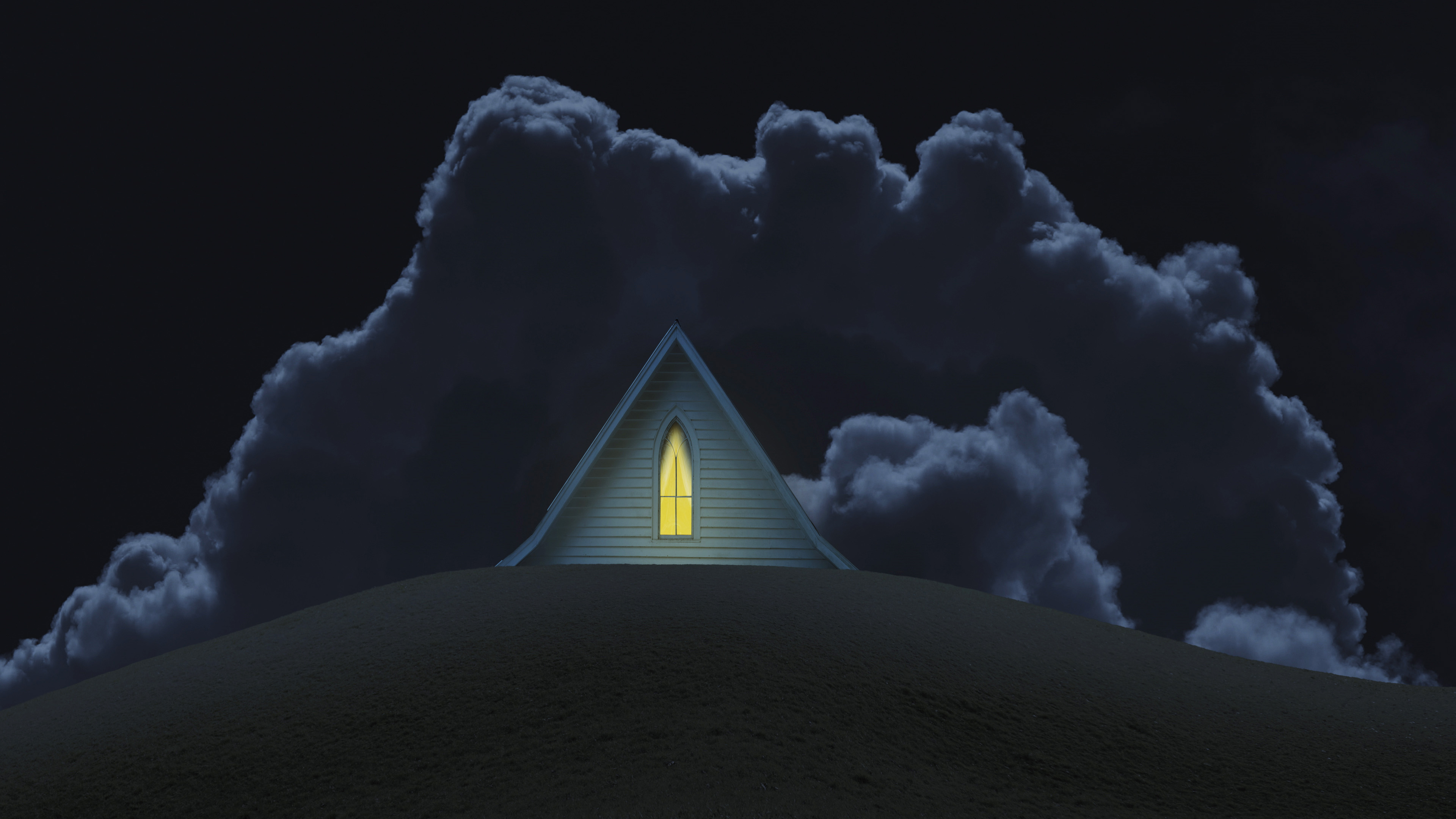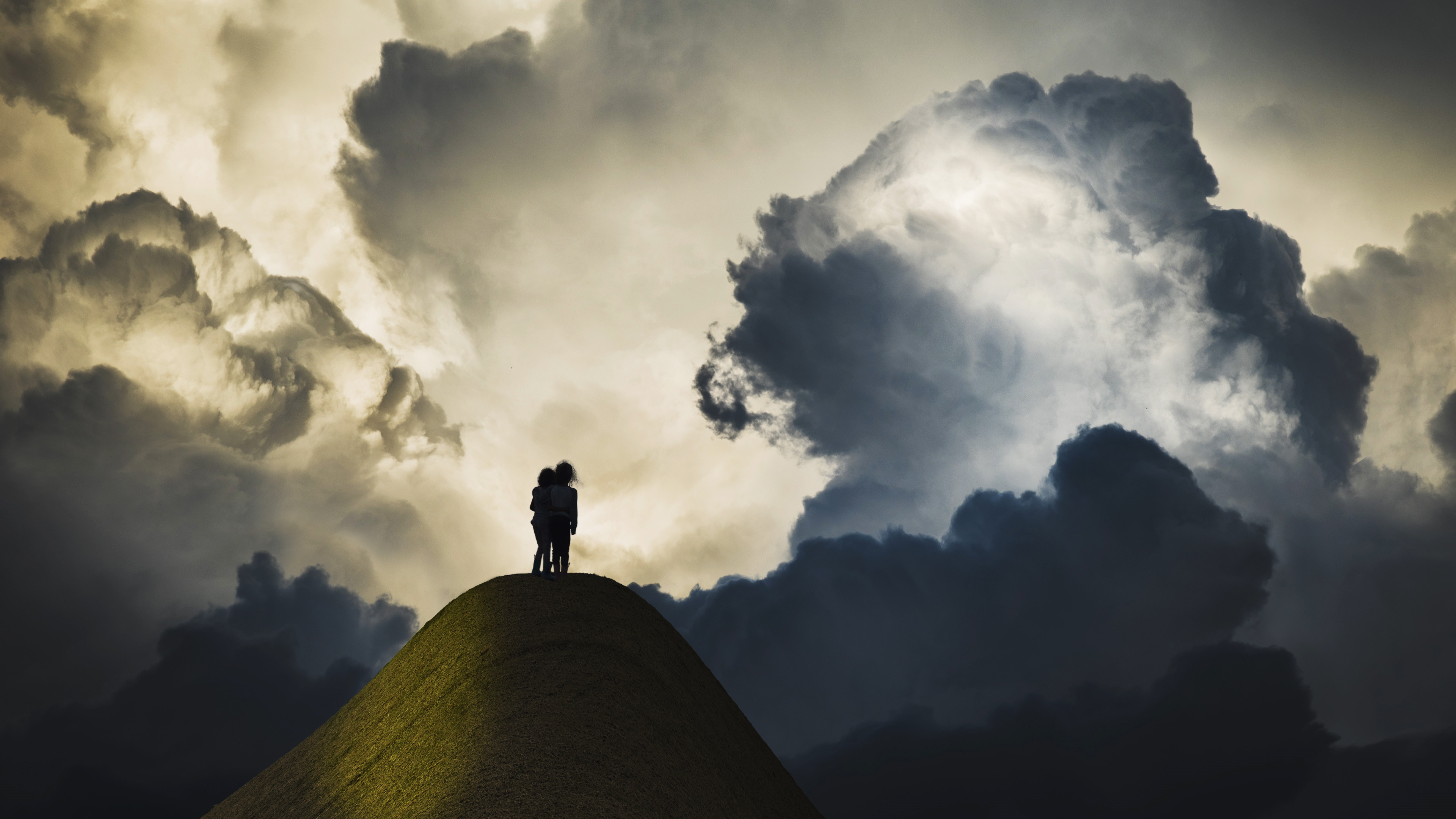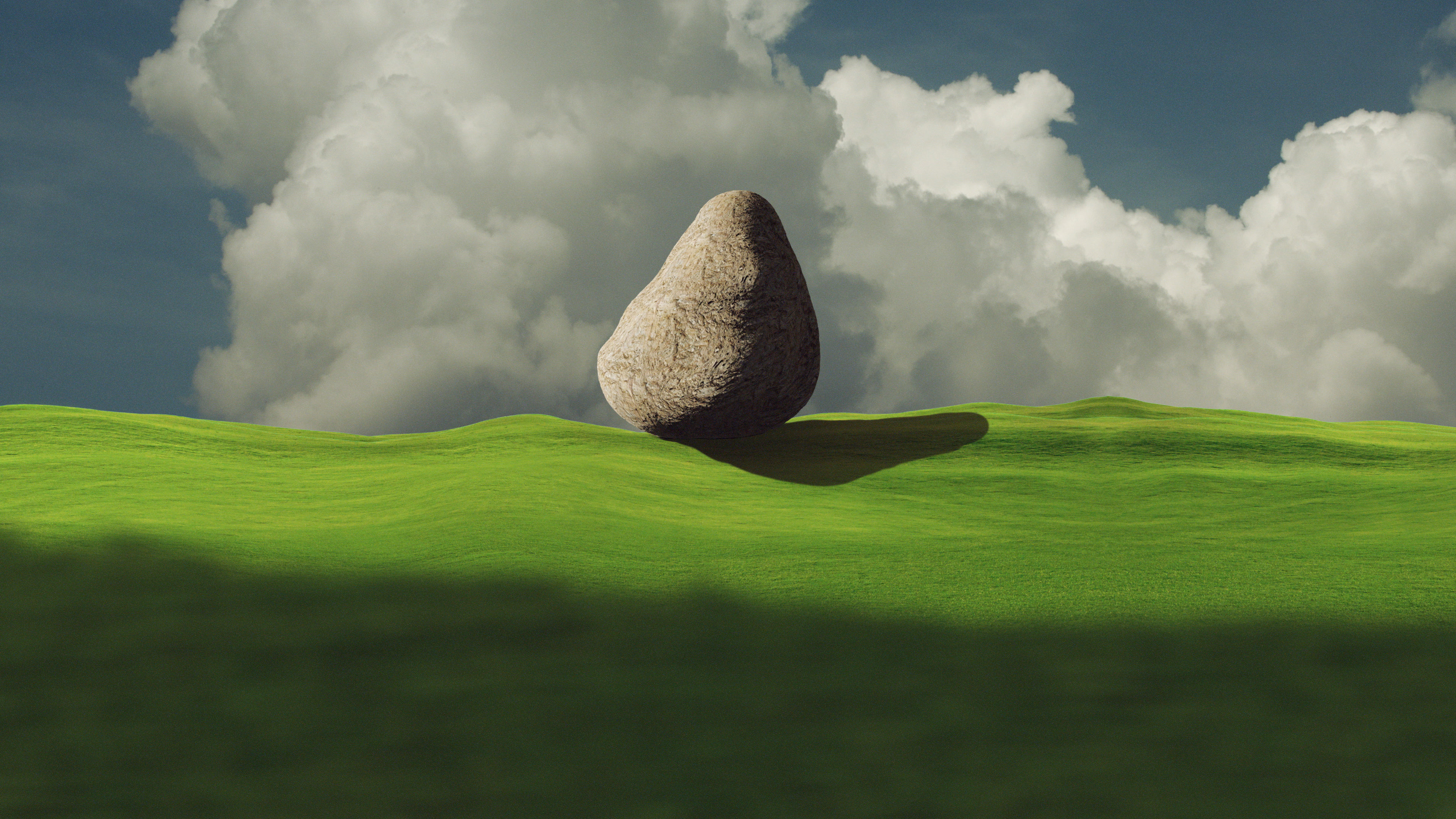Andrew Caldwell
Fearful Fascination, 2019
Lens-based new media incorporating still and moving images, 3D and motion graphics techniques, 2:00
On loan from the Artist
On view in the E. Craig Wall, Jr. Academic Center from August 16 – October 3, 2020, along with three other works that address the themes of migration, displacement, and belonging.
Please note: All buildings on campus, including the Wall Center, are only open to Davidson students, faculty, and staff due to the pandemic. We are planning to re-screen videos at a later date when the campus opens to the community! Sign up for our mailing list to stay in the loop.
In Fearful Fascination, Andrew Caldwell depicts rolling mountains and voluminous clouds from his current location in Appalachia. Each scene is a snapshot in time, as if the viewer was experiencing these scenes standing from afar or passing by in a moving vehicle.
Of his work, Caldwell explains, “The series is the visual expression of my experiences as a mixed-race individual who recently relocated to Appalachia. Having never before lived in the South, these past few years amongst the rolling hills and soaring clouds have forced me to come face to face with the racial complexities of our collective, and my own, American history. While I explore my new environment with a youthful curiosity, there remains an ever-present reality that I am not welcome in all areas. The truth of this, articulated through experience, prevents me from finding answers to many questions. These Appalachian mysteries will remain as such, becoming more vibrant and vivid each time I revisit them. Despite my imaginative efforts, truth remains stranger than fiction. Created in the same spirit as my multicultural heritage, these lens-based, new media vignettes are created with a wide ranging blend of techniques and technologies.”
“Having never before lived in the South, these past few years amongst the rolling hills and soaring clouds have forced me to come face to face with the racial complexities of our collective, and my own, American history.”
Q&A with artist Andrew Caldwell and gallery intern Emilie Hoke ’21:
Q: Tell me about your work as a whole and what motivates you as an artist.
A: I like to tell stories. Stories are how I process the world around me and I love hearing, reading and watching them almost as much as I love telling them. We can learn so much from each other as we tell our stories. I am a photographer by trade and my early interest in the medium was driven by technology. I love buttons and dials and anything “techy”. My passion for telling stories through my art is linked with a desire to explore different technologies and software. Even though our culture is aware of photoshop and manipulated imagery, the truth value attributed to photographs persists and I leverage this in my art. I create fictional scenes that are photographically believable, what I like to call hypothetical realism. When the resulting scenes start to feel uncanny, I know I’m getting close. I like my work to be satisfying on the surface while also containing symbolism and metaphor that communicates my personal story, experiences and search for identity.
Q: What is your artistic process?
A: First, and foremost, I am a photographer. It’s how I see and approach the world. At the same time, I am easily bored and straight photography never seemed to be able to fully express what I wanted to say or feel. My process is lens-based and includes images generated with a multitude of technologies. My scenes typically begin with still images from my own camera, moving images, or other times I incorporate found or royalty-free images. My process begins when I see an image that stirs an emotional response. For instance, when a house feels like it’s telling a story. Rarely is that house sitting in an environment that tells the story I want to tell, so I will free it from its current setting with photoshop. The story brewing in my head dictates the landscape the house should be in, so I’ll search for an image of that perfect place. The image I find of the landscape rarely has the right sky or clouds, so I’ll look for those next. The vast majority of time spent on my art is just flipping through my own archives of 1000’s of images and videos and online archives. I might spend 5 hours looking for the perfect sky image and never find it, instead opting to create one from multiple images. One scene may take three days to create, and another may come together in an hour. Each scene I create feels like an adventure of discovery; I never know where it’s going until I get there. Fearful Fascination is my second project to incorporate moving images, and the added dimension of time has only expanded my storytelling capabilities.
Q: How does the North Carolina landscape influence Fearful Fascination? Are the vignettes inspired by specific environments in NC?
A: Great question! I live in Boone, and the clouds, mountains and gentle rolling hills of the surrounding areas are awe-inspiring. I grew up in Michigan, the really flat part, and I always longed for more varied geographies and topographies. The images of golden rolling hills in California inspired me to go to school out West and after 15 years, a teaching opportunity moved our family to Boone in 2015. I am huge geography nerd and maps are my jam. The previous owners of our home left behind a vintage 3d topographic map of the area. While trying to locate the nearby peaks on the map that I could see out my window, I realized one of the more prominent mountains was named “Nigger Mountain.” I was in disbelief and thought for sure I was misreading it. The map was an official USGS map and it was from 1962. The peak has since been renamed Mt. Jefferson, but this moment caused me to immediately question our relocation. I am a mixed-race Black man and my wife is a first generation American born Indian and we have two young daughters. Neither of us are from or have spent much time in the South, so this experience shook us. I see this mountain every day and it serves as a constant reminder of the complex and challenging history of our new home. I am curious about my new environment, but I honestly don’t feel comfortable exploring every dirt road. This is the crux of this project and with so many unanswered questions, there are just as many unresolved mysteries. Boone also has the most dynamic weather of any place I’ve ever lived and I spend a lot of time just watching clouds. The sluggish permanence of the landscape, literally and metaphorically, is juxtaposed with a soaring and everchanging cloudscape. The scenes in this work are not specific to any one place, rather they are reflections of my collective experience of living in Appalachia.
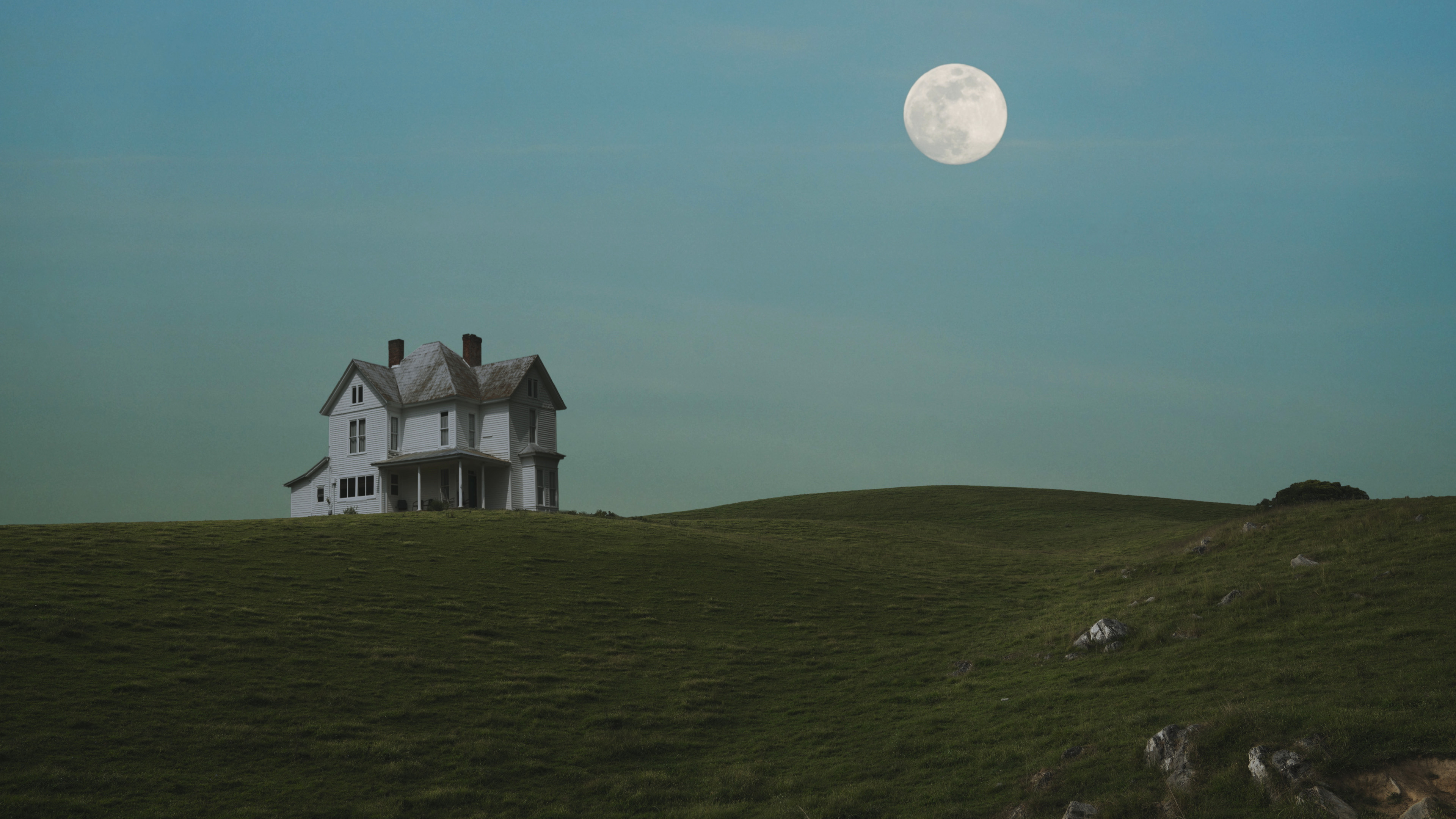
Q: What is the relationship between identity and environment in your work?
A: Our identities are inextricably linked to our environment. I have grappled with my identity my whole life. No matter where I have lived, the landscape has always influenced that process. It’s incredible to stop and consider how much of who we are is tied to where we live, for better or worse. I’ve always been acutely aware of the geography of my environment and observed the connections between who and where I am. When I look at my work, I see a record of where I was when I made it and am reminded of that particular moment in the exploration of my identity. Every image contains little nuggets of personal stories and moments, some of which I discuss, others that I keep for just myself or select few.
Q: What is the relevance of Fearful Fascination to a college campus?
A: The series is an expression of finding oneself in an unfamiliar place. The early college experience is very similar. The world feels big and exciting but there are so many unknowns, like cocky upperclassmen, crazy professors and bewildering acronyms. In all seriousness, the vignettes are a meditation. The pacing is inspired by the patience required to be still long enough to watch the clouds dance. We all need opportunities to slow down and breathe in these crazy times. Whether it’s surface level observations or a deeper consideration of the experiences of another, I try to make work that is accessible at multiple levels. One of my favorite things to do is watch young kids look at my work. It’s such pure experience and I wish us adults could approach art with that same openness!
Q: What’s next for you in your art? Do you foresee continuing with more new media vignettes like you used in Fearful Fascination?
A: I am continuing to explore this format of vignettes, but I am always looking towards the future and what’s next. I am currently fascinated with the 3d environment and the way lens choices and lighting in the virtual environment can generate images that can be seamlessly integrated with those from the real world. These renders are gradually making their way into my work. Content wise, I’m at somewhat of a crossroads. I want my work to make more definitive statements that contribute differently to issues of representation, identity and racism but I am not sure this current format is the right one. So, I’m exploring other options like film, writing and music. It’s an exciting place to be in at this moment and I’m anxious to see where those explorations will lead. Most of the time, my explorations of seemingly unrelated disciplines lead me back to my core of photography. Maybe I’ll make a series of straight photographs. That would be the most 2020 thing I could do with my art!
About the Artist
Andrew Caldwell is a visual artist and photographer. He earned both his BS in Professional Photography with a concentration in Digital Media and his MFA in Photography from the Brooks Institute in California. His work has been shown across the world, including at Los Angeles Center for Photography, the South East Center for Photography, and the Prix de La Photographie de Paris. He has received numerous awards for his works, including a Top 25 finish for the Time-Based category in in the well-known international art competition, Art Prize 10. He is currently based in Boone, North Carolina as an Assistant Professor of Commercial Photography at Appalachian State University.
About Digital Art Exhibitions in the Wall Academic Center: The Van Every/Smith Galleries hosted a national call to artists in the fall of 2019. An interdisciplinary panel of Davidson College community members—including members of the Art Collection Advisory Committee, professors, staff, and students—reviewed hundreds of submissions. The selected artworks screen as mini-exhibitions that change every few months.

